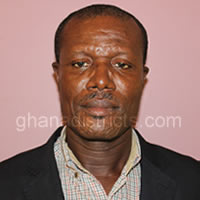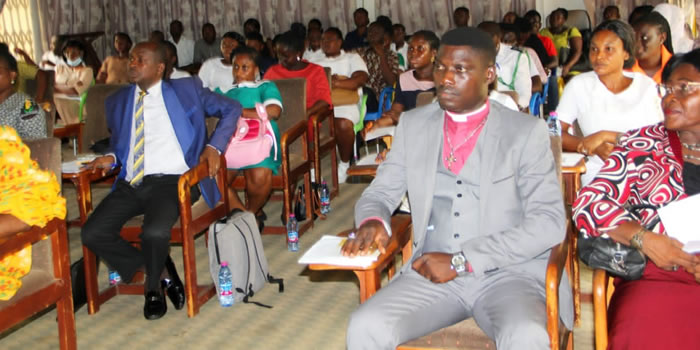

Introduction
An analysis of the Population size, composition and distribution is necessary for development planning and policy implementation. This chapter discusses the demographic characteristics of the Obuasi Municipality and includes the population size and distribution, Age/sex structure, migration, fertility and mortality.
Population Size and Distribution
Table 2.1 shows the population of Obuasi Municipality by sex and age. From the Table, the population of the municipality is 168,641 with 81,015 males and 87,626 females. Persons living in urban localities are 143,644 and in rural areas 24,997. This means the urban share of the population is 85.2 percent while that of rural areas is 14.8 percent.
Age-Sex Ratio
The sex ratio for the entire Municipal is 92.5 which means that for every 100 females there are about 93 males. At birth there are more males than female (100.5 males to 100 females). The figure reduces to an average of 100 in age 5-9 where the male population is almost equal to the female population with neither male nor female out numbering the other. From age 10-44 the trend shows more females than males and the sex ratio shows a downward trend from 94.3 to 89.5. From age group 45-49 to 60-64 the sex ratios increase. It means there are more males than females within those age groups. This may be due to a combination of factors higher female mortality and/or higher proportion of females than males migrating. Finally the sex ratios drop from 109.3 through to 52.2 from 65 to 99 years.
Age Structure
The population pyramid for Obuasi Municipality presented in Figure 2.1 shows a broad base figure which gradually decreases with increasing age and finally narrows to a cone at the top. The shape of the pyramid depicts a youthful population. The data in Table 2.1 further show that the population below 15 years constitutes 36.3 while those 15 to 64 years form 61.0 and the 65 years and older 2.1 percent. Even though the age structure shows a generally youthful population, the data and the pyramid show that the proportions of population aged 0-4 and 5-9 years are lower than that of 10-14. This indicates that fertility is reducing.
Age dependency ratio
Table 2.1 also shows the age dependency ratio for the district and for rural and urban localities. The district has a total age dependency ratio of 63.8. This means that a hundred persons in the working age group (15-64) cater for about 64 persons in the dependent age
groups (0-14 and 65 years and older). Age dependency ratio is lower in urban 61.2 than in rural areas 81.1, which means that the age dependency burden is heavier in the rural than urban localities.
Fertility, Mortality and Migration
Fertility
Fertility is an important component of population change and it is a determinant of the size and structure of the population. This section looks at the total fertility rate, general fertility rate, the Crude Birth rate and the number of births in the last 12 months of the Municipality.
Table 2.3 shows the female population 12 years and older by age groups; children ever born, children surviving and sex of child in the municipality. There are 63,504 females 12 years and older in the Obuasi municipality. The average number of children ever born by females in the Municipality is 2.0 per female and the corresponding number of children surviving averages 1.7. This shows that of the two children born to each female across the various age cohorts at least one would survive.
The highest average number of children ever born, 5.5, is reported for females aged 65 years and above and the number of children surviving averages 4.3 for the same age group. This is equally the highest among the children surviving born to females across the various age groups. The age group 12-14 years records 25 children ever born (the lowest number of children ever born) and 17 for children surviving. This means that only a few females give birth before age 15. It is also observed that the average number of children ever born increases as age group progresses and the trend is similar with children surviving. It connotes that the number of children ever born and surviving is tied to age.
From Table 2.2 Women of the reproductive age group, 15-49 years ( 48,834) constitute about 29.0 percent of the municipal’s population. The total fertility rate in the Municipality is 2.7 which is lower than the regional figure of 3.3.The general fertility rate is 76.7 which is also lower than the regional rate of 96.4, and the Crude Birth rate is 22.2 compared with the regional figure of 25.7.The Municipality also recorded 3,745 live births in the last 12 months before the 2010 census.
Mortality
The 2010 PHC captured information on age at death by sex in the Municipality (Table 2.4). Of the 784 deaths reported, about a quarter, (24 %) is under five years mortality. This depicts a high under five mortality rate. This is followed by deaths of people aged 70 years and above who recorded 13.8 percent while age group 10-14 has the lowest 1.6 percent mortality rate. Besides, the percentage of deaths recorded from ages 10 - 69 spans between 1.6 and 2.5 percent. This indicates that high mortality rates are recorded at extreme ages.
The age specific death rate is high for both males and females for the under-five age group. The least recorded for males is 0.0 for age group10-14 and that of females is 0.001 which is the same for age groups 5-9, 10-14 and 10-15. Number of female deaths is higher compared to male deaths in age groups 20-24 (18), 25-29 (20), 30-34 (39), 40-44 (31) and 45-49 (26). This implies high maternal mortality.
Migration
Table 2.6 shows birth place and duration of residence of migrants in the Obuasi Municipality. The total number of migrants in the Municipality is 61,558. Those born elsewhere in the region are 28,397 and the remaining 33,161 people were born elsewhere in another region and outside Ghana. 25.8 percent of the migrants have stayed in the Municipality for more than 20 years while 24.5 percent of them have stayed from 10 to 19 years. Only 11.6 percent of the migrants have stayed in the Municipality for less than a year. Most of migrants from outside Ghana 28.8 percent have stayed for 1-4 years.
Most Ghanaian migrants to Obuasi are mainly from Central, Western, Upper West and Eastern. The lowest number from the regions comes from Northern region.
Date Created : 11/27/2017 6:39:08 AM













 facebook
facebook
 twitter
twitter
 Youtube
Youtube
 +233 593 831 280
+233 593 831 280 0800 430 430
0800 430 430 GPS: GE-231-4383
GPS: GE-231-4383 info@ghanadistricts.com
info@ghanadistricts.com Box GP1044, Accra, Ghana
Box GP1044, Accra, Ghana